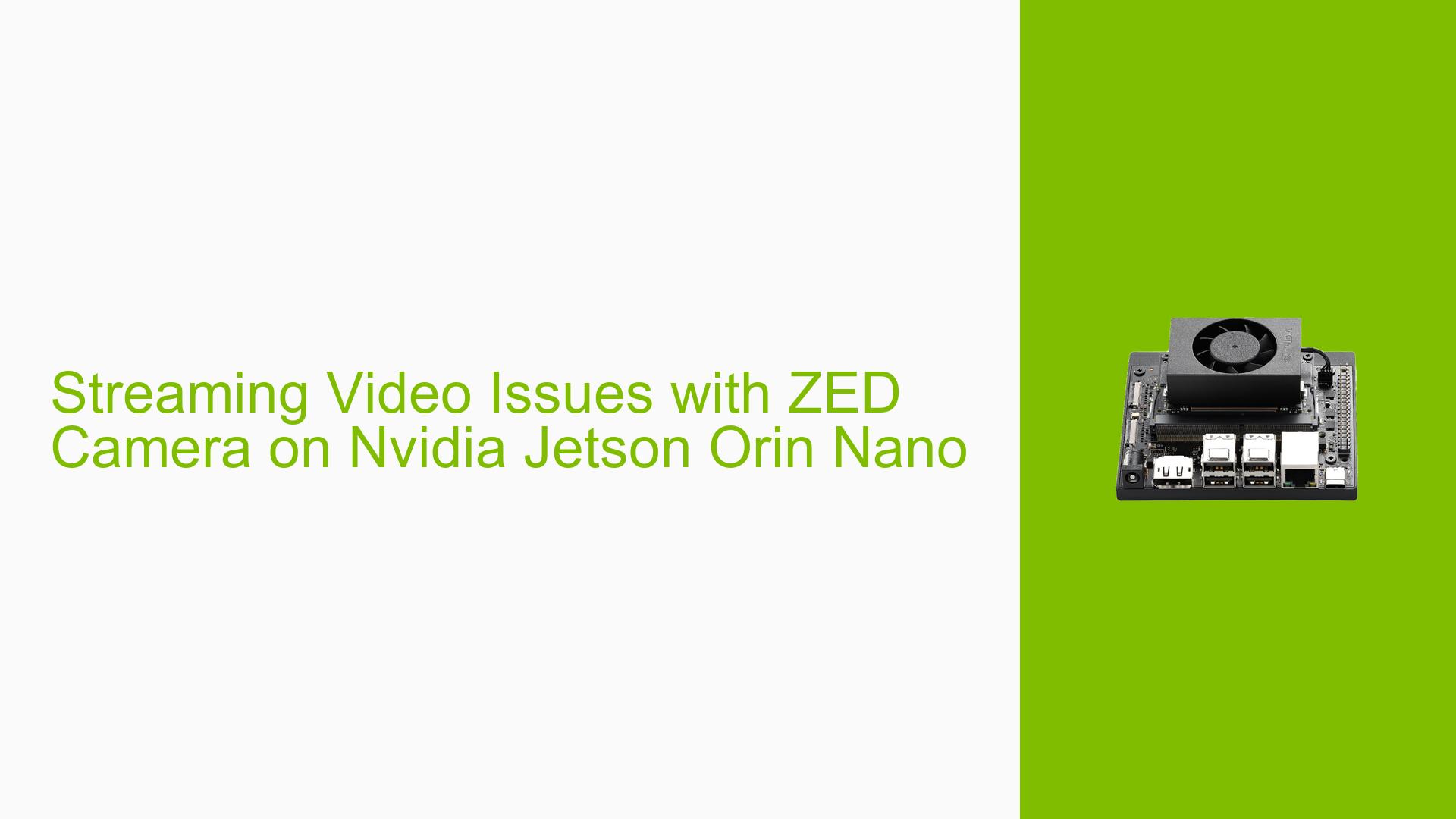Streaming Video Issues with ZED Camera on Nvidia Jetson Orin Nano
Issue Overview
Users are experiencing difficulties streaming video from a ZED camera using the Nvidia Jetson Orin Nano development board. The primary challenge stems from the Orin Nano’s lack of hardware-based H.264 encoding capabilities, which are typically essential for efficient video streaming. This limitation affects users attempting to stream video to other devices, resulting in no video display on the receiving end. The issue occurs specifically when trying to send video streams from the Orin Nano to external devices, while local video playback on the same Jetson device appears to function correctly.
Possible Causes
-
Hardware Limitation: The Nvidia Jetson Orin Nano lacks a dedicated hardware H.264 encoder, which is crucial for efficient video streaming.
-
Software Configuration: Incorrect or suboptimal settings in the GStreamer pipeline may lead to streaming failures, particularly when attempting to send video to external devices.
-
Network Issues: Problems with network connectivity or firewall settings could prevent the video stream from reaching the target device.
-
Incompatibility: Potential incompatibility between the ZED camera software stack and the chosen encoding/streaming method may cause issues.
-
Resource Constraints: The software-based encoding process might be too resource-intensive for the Orin Nano, leading to performance issues or stream failures.
Troubleshooting Steps, Solutions & Fixes
-
Implement Software-based Encoding:
Since the Orin Nano lacks hardware encoding, utilize software-based encoding solutions:- Use x264enc in GStreamer or FFmpeg for H.264 encoding.
- Implement the software encoding method described in the NVIDIA Jetson Linux Developer Guide.
-
Optimize GStreamer Pipeline:
Adjust the GStreamer pipeline for better performance:- Modify x264enc properties to reduce encoding complexity:
x264enc cabac=false ref=1 byte-stream=true tune=zerolatency speed-preset=ultrafast bitrate=3000 - This configuration disables CABAC (using CAVLC instead) and reduces the number of reference frames, which may improve encoding speed and compatibility.
- Modify x264enc properties to reduce encoding complexity:
-
Integrate ZED with GStreamer:
Ensure proper integration between the ZED camera software and GStreamer:- Follow ZED documentation for correct setup and integration with GStreamer.
- Verify that the ZED source (zedsrc) is correctly configured in the GStreamer pipeline.
-
Adjust Network Settings:
Ensure proper network configuration for streaming:- Verify that the IP address and port in the udpsink element are correct:
udpsink clients=192.168.137.184:5000 max-bitrate=3000000 sync=false async=false - Check firewall settings on both the sending and receiving devices to allow UDP traffic on the specified port.
- Verify that the IP address and port in the udpsink element are correct:
-
Optimize Encoding Parameters:
Fine-tune encoding settings to balance quality and performance:- Experiment with different bitrates (e.g., lower than 3000 Kbps) to reduce bandwidth requirements.
- Adjust the speed-preset parameter in x264enc (e.g., try "veryfast" instead of "ultrafast") to find the optimal balance between encoding speed and quality.
-
Verify Receiver Configuration:
Ensure the receiving device is correctly configured:- Use the provided GStreamer pipeline for receiving:
gst-launch-1.0 udpsrc port=5000 ! application/x-rtp,clock-rate=90000,payload=96 ! queue ! rtph264depay ! h264parse ! avdec_h264 ! queue ! autovideoconvert ! fpsdisplaysink - Confirm that the receiving device supports H.264 decoding and has the necessary codecs installed.
- Use the provided GStreamer pipeline for receiving:
-
Monitor System Resources:
Keep track of CPU and memory usage during streaming:- Use tools like
toporhtopto monitor resource utilization. - If the system is overloaded, consider reducing the video resolution or frame rate to alleviate stress on the software encoder.
- Use tools like
-
Update Software:
Ensure all relevant software components are up to date:- Update the Jetson Linux system, CUDA toolkit, and ZED SDK to their latest compatible versions.
- Check for any known issues or bug fixes in the latest releases that might address streaming problems.
-
Explore Alternative Streaming Methods:
If H.264 streaming remains problematic, consider alternative approaches:- Investigate other video codecs that might be more efficient for software encoding on the Orin Nano.
- Explore the possibility of using a USB-based external encoder as a hardware solution, if compatible with the Orin Nano.
By systematically applying these troubleshooting steps and solutions, users should be able to address the video streaming issues with the ZED camera on the Nvidia Jetson Orin Nano. If problems persist, further investigation into the specific error messages or logs produced during streaming attempts may be necessary to identify any underlying issues not covered in this document.
